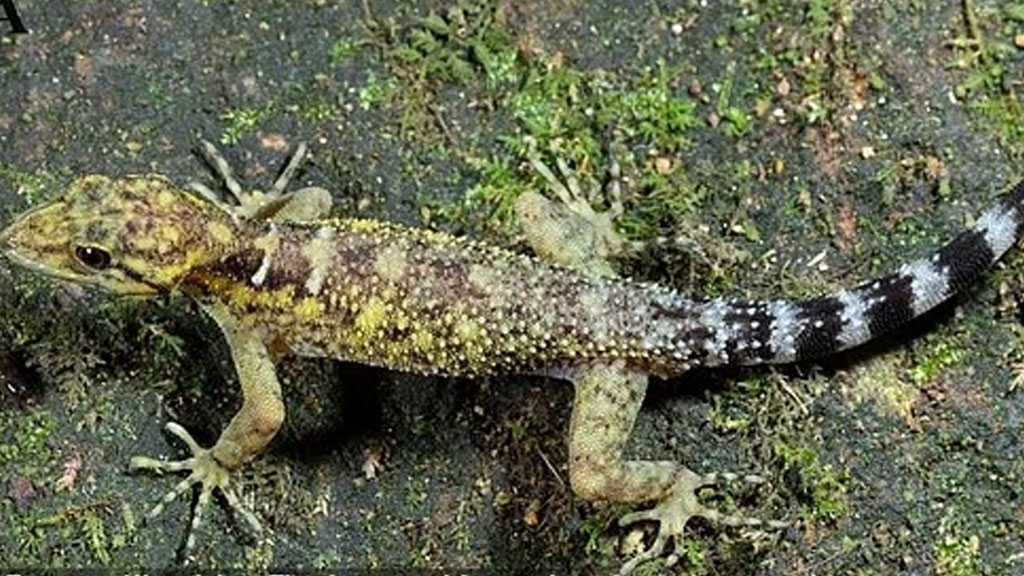
New High-Altitude Reptilian Creature Discovered in India’s Forest

By Staff, Agencies
A scaly creature with long fingers and red eyes, which was discovered in India's evergreen forests, has been confirmed as a new species.
Biologists conducted a DNA analysis on an unusually large gecko they found wandering nearly 4,600 feet above sea level on the Valparai Plateau in the southwestern part of the country.
The gecko — now officially called the 'Valparai dwarf gecko' — lives almost exclusively in 'boulder habitats in evergreen forests in Tenkasi,' a region that is home to some of India's most important spiritual and cultural sites.
But the team also found four more brand new species of gecko, all from the same common ancestor, and each keeping to their own tiny habitats high up within India's tropical evergreen forests.
The phenomena of a species evolving to fit a very small niche in an equally tiny habitat is called 'extreme micro-endemism.'
And all 23 known species of this form of gecko are known to be equally homebound to their small local ecosystem.
The new Valparai dwarf geckos were classified as large for this family of lizard, but reach only about 4.5 inches long, according to the new study published this June in the peer-reviewed journal Zootaxa.
The Valparai dwarf was identified as a new species first by its unique red eyes, its coloring and scale pattern, the position of its many spikes and the long fingers visible on its claws.
But on a less visible, microscopic level, DNA tests of the Valparai dwarf specimens showed that the lizards were more than eight percent different in terms of genetics than their fellow dwarf geckos.
The geckos were found in a cave outside Tenkasi, perched on rocks near a road, one of the region's many temples and a tea plantation.
It's estimated that the lizard's home range includes an elevation between of 3,900 and 4,600 feet.
The samples of the Valparai dwarf gecko showed surprising variation in color within just this one new species.
All three Valparai specimens have 'yellow-brown' coloring, but the two male specimens had darker 'black and white' regions along their tales.
One male dwarf gecko specimen had sides peppered with bright yellow spots, while the other had a dull brown section of tale from where the appendage had been cut off and later regenerated or grew back.
The female specimen of the Valparai dwarf appeared to generally be 'much darker,' according to the researchers, with 'less prominent yellow coloration.' The female also appeared to have an orange-brown tail.
The study's three coauthors, who were working with the Thackeray Wildlife Foundation and India's Shivaji University, also identified four more new and closely related dwarf gecko species.
Named the Agamalai dwarf gecko, the Anaimalai dwarf gecko, Anuradha's dwarf gecko and the Tenkasi dwarf gecko, these new species had a genetic divergence of somewhere between 5.4 and 2.3 percent difference from one another, the researchers said.
In keeping with all these hyperlocal and rare gecko species, the research team also noted that there were three more 'non-sister species' of gecko, on top of the 23 total known, living along a straight-line within one mile of each other on the Valparai Plateau's protected Anaimalai Tiger Reserve.
Comments
- Related News

FT: World Gripped by Mental Health Pandemic
2 months ago
IPhone 16 into Markets with AI Features
6 months ago